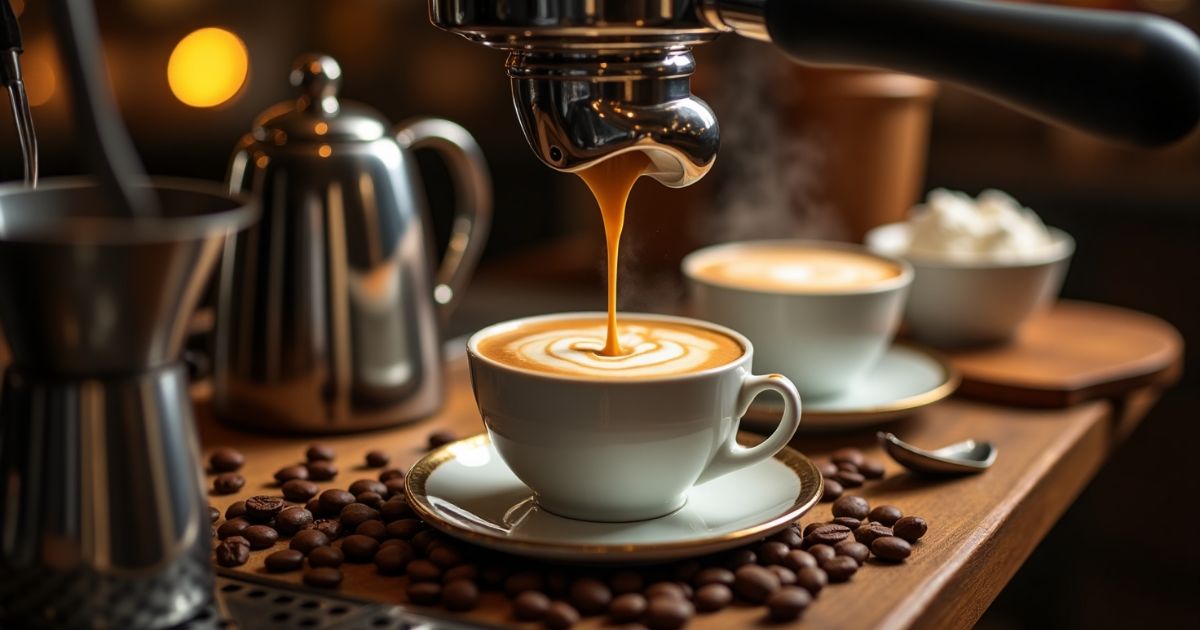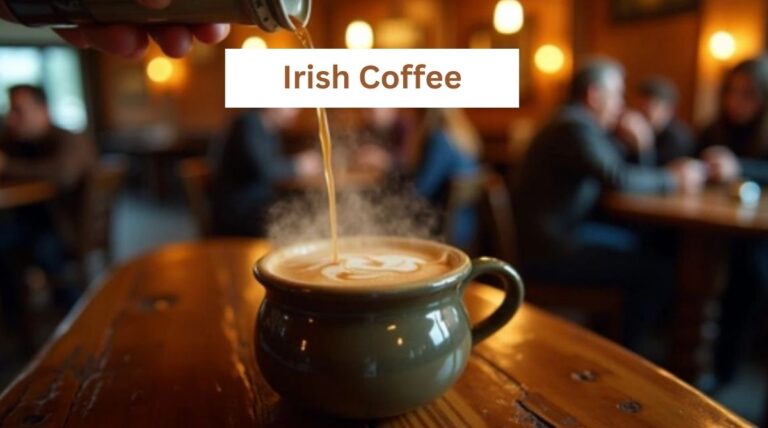Espresso Coffee 101: The Complete Guide to Brewing the Perfect Shot
If you’ve ever wondered how to brew the perfect espresso, you’re not alone. Many people want to know what makes a great espresso and how to make it themselves.
Espresso coffee is a concentrated form of coffee brewed under high pressure. Hot water is forced through finely ground coffee beans, creating a rich, powerful shot. A typical espresso shot is about 1 ounce (30 ml).
In this guide, we’ll dive into everything you need to know about espresso coffee. From its origins to the techniques you need to master, this is your go-to resource for brewing a perfect shot at home.
What is Espresso Coffee?
Espresso coffee is a concentrated form of coffee brewed by forcing hot water under pressure through finely-ground coffee beans. Unlike regular coffee, it’s thick, rich, and full of flavor. A standard espresso shot is typically made with about 18 to 20 grams of coffee, yielding a 1-ounce (30ml) serving.
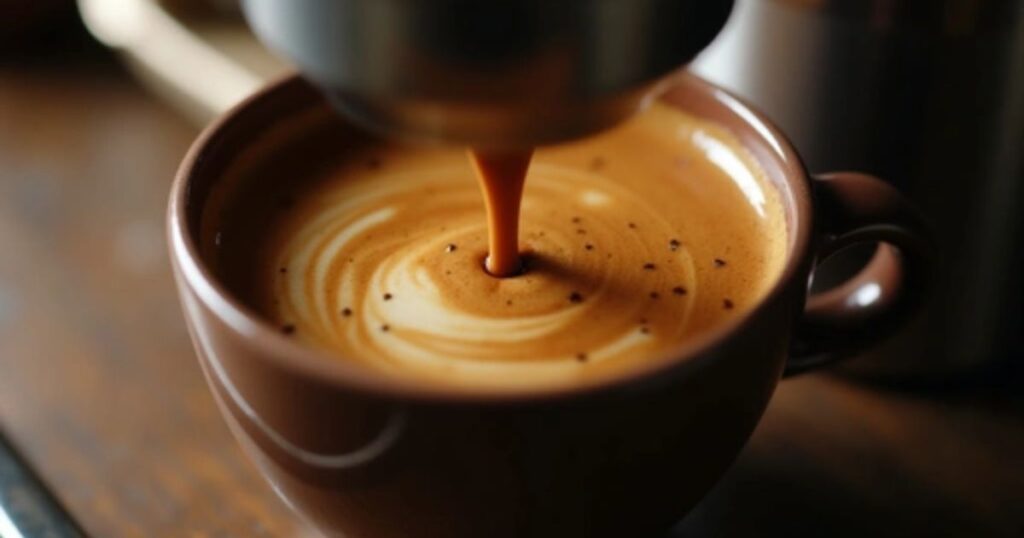
The magic happens under the machine’s pressure, which is usually set around 9 bars. This high pressure extracts the coffee’s flavors and oils, giving it the smooth texture and deep flavor that espresso is known for.
A Brief History of Espresso Coffee
The story of espresso coffee dates back to Italy in the early 1900s. It was invented as a faster way to brew coffee, and the word “espresso” itself means “pressed out” in Italian.
In the beginning, the espresso machine was a luxury item found only in coffee shops, but over time, it became a staple in homes worldwide. Today, espresso coffee is the base for many popular drinks, like lattes, cappuccinos, and Americanos.
Espresso vs Coffee: What’s the Difference?
Espresso and regular coffee are made from the same beans but brewed differently. Espresso is a concentrated shot brewed under high pressure, while regular coffee is brewed using methods like drip or French press. Espresso is stronger and more intense in flavor.

Brewing Process
Espresso uses an espresso machine to force water through finely-ground coffee under pressure. Regular coffee is brewed using gravity or steeping methods, which take longer. This makes espresso more concentrated than regular coffee.
Taste and Texture
Espresso has a bold, rich flavor and a creamy texture. It’s more bitter and thicker. Regular coffee is lighter, thinner, and usually less intense in flavor.
Caffeine Content
Espresso has 63 milligrams of caffeine per shot. Regular coffee has more, with around 95 milligrams per 8 ounces. However, you need to drink more espresso shots to match the caffeine in a regular cup of coffee.
Serving Size
Espresso is served in small, 1-ounce shots. Regular coffee is served in larger cups, usually 8 to 12 ounces. This makes espresso feel stronger despite the smaller serving size.
Why Is Espresso Coffee So Popular?
Espresso coffee is popular for several reasons. First, it’s quick. A shot of espresso takes less than a minute to brew. Second, it’s rich in flavor and packed with caffeine. For many coffee lovers, it’s the purest and most exciting way to enjoy coffee. It’s a full-bodied, intense experience, unlike any other brew.
Best Coffee Beans for Espresso
Choosing the best coffee beans for espresso is crucial for brewing a flavorful, well-balanced shot. The ideal espresso beans should have a rich, full-bodied flavor with a perfect balance of acidity, sweetness, and bitterness. Beans from regions like Ethiopia, Colombia, and Brazil are popular choices due to their distinct profiles.
For a classic espresso, look for medium to dark roast beans. Darker roasts tend to bring out deep, chocolatey flavors with a slight smoky finish, ideal for espresso. Light roasts can also be used, but they offer more acidity, which might not be everyone’s preference for espresso.
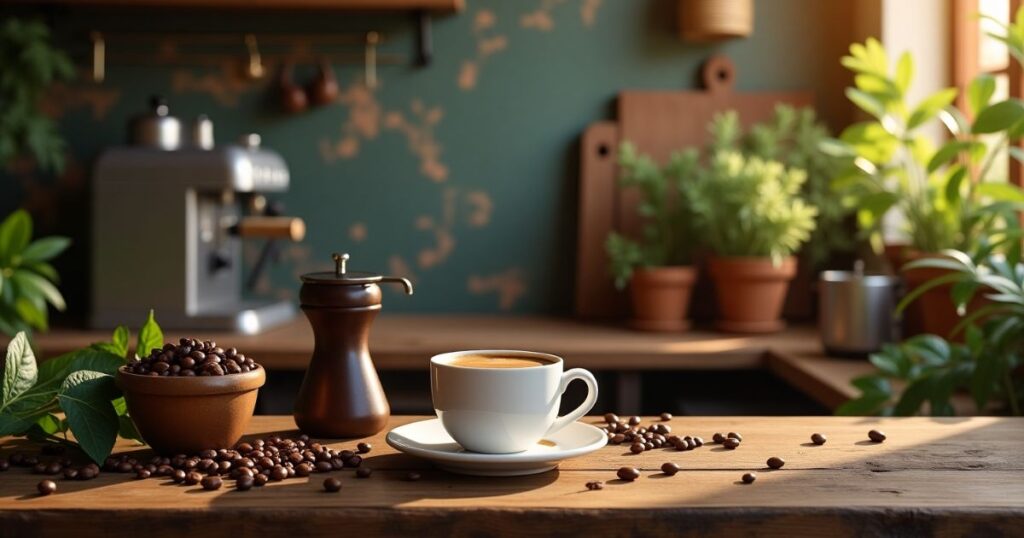
Single-origin beans are a great option if you want to explore different flavors and aromas in your espresso. For example, an Ethiopian bean offers bright, fruity notes, while a Colombian bean provides a smooth, nutty taste. Many coffee lovers opt for blends, as they combine the best characteristics of various beans, ensuring a balanced cup.
Ultimately, the best coffee beans for espresso come down to personal preference. Whether you like bold, smoky flavors or something a bit more delicate and fruity, experimenting with different beans will help you find the perfect match for your espresso shots.
Always buy freshly roasted beans and grind them just before brewing to ensure the best flavor extraction.
Essential Equipment for Brewing Espresso Coffee
To brew the perfect shot of espresso coffee, you need the right tools. Here are the essentials:
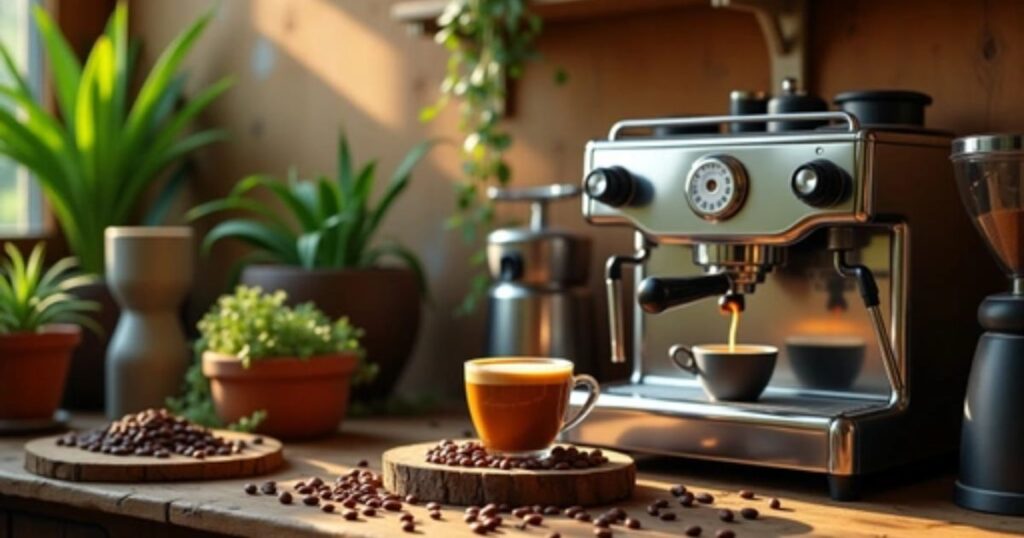
- Espresso Machine: This is the heart of the process. Whether you go for a manual, semi-automatic, or fully automatic machine, it’s essential for creating that high-pressure extraction.
- Coffee Grinder: A burr grinder is the best option, as it provides consistent grind size. For espresso, the grind should be very fine, almost like powdered sugar.
- Fresh Coffee Beans: Always use freshly roasted beans. The quality and freshness of your beans make a big difference.
- Tamping Tool: Tamping is the process of pressing down the coffee grounds in the portafilter to ensure uniform extraction.
- Scale: For precision, a scale will help you measure the right amount of coffee for each shot.
The Step-by-Step Guide to Brewing Espresso Coffee
To brew your favorite shot of espresso you must be familiar with all the steps given below:

Step 1: Measure and Grind Your Coffee
Start by weighing around 18 to 20 grams of coffee. Grind the beans to a fine consistency, similar to table salt. The grind size is crucial for achieving the right flavor balance.
Step 2: Preheat Your Espresso Machine
Let your machine warm up for at least 15 minutes before brewing. This ensures consistent temperature, which is key for a good espresso.
Step 3: Tamp the Coffee Grounds
Place the grounds into the portafilter. Use a tamper to press the coffee evenly. A firm, even tamp will help you avoid uneven extraction and ensure a smooth shot.
Step 4: Brew the Espresso
Lock the portafilter into the espresso machine. Start the brew and watch the magic happen. A perfect shot takes around 25-30 seconds to extract. You’ll know it’s right when you see a golden-brown, syrupy liquid flowing from the spout.
Step 5: Enjoy Your Espresso
Once the shot is brewed, enjoy it immediately. Espresso coffee is best served fresh, as it starts losing its flavor within minutes.
Mistakes to Avoid When Brewing Espresso Coffee
Brewing espresso is an art, and like any art, there are mistakes you can make. Here are some common pitfalls to avoid:
Using stale beans: Freshness is key. Always grind your beans right before brewing.
Inconsistent grind size: A uniform grind ensures an even extraction. A burr grinder is the best tool for this.
Incorrect tamping: Uneven tamping can cause uneven extraction. Be sure to apply firm, even pressure when tamping.
Brewing too fast or too slow: If your espresso flows too quickly, your grind may be too coarse. If it’s too slow, it could be too fine.
How much caffeine is in espresso coffee
Espresso coffee caffein content is typicaly around 63 milligrams of caffeine per 1-ounce shot. This is a concentrated amount compared to regular drip coffee, which usually contains around 95 milligrams of caffeine per 8-ounce cup.
However, because espresso is served in smaller quantities, the total caffeine content is much lower per serving.
The actual caffeine content in espresso can vary depending on factors like the type of coffee beans used, the grind size, and the brewing technique. For example, if you use a darker roast, it might have slightly less caffeine than a lighter roast.
Regardless, espresso remains a popular choice for those looking for a quick, powerful caffeine boost in a small, rich shot.
Espresso Coffee and Its Health Benefits
Espresso coffee offers numerous health benefits, making it a great choice for coffee lovers. From boosting metabolism to supporting heart health, here’s why you should consider enjoying espresso in moderation.
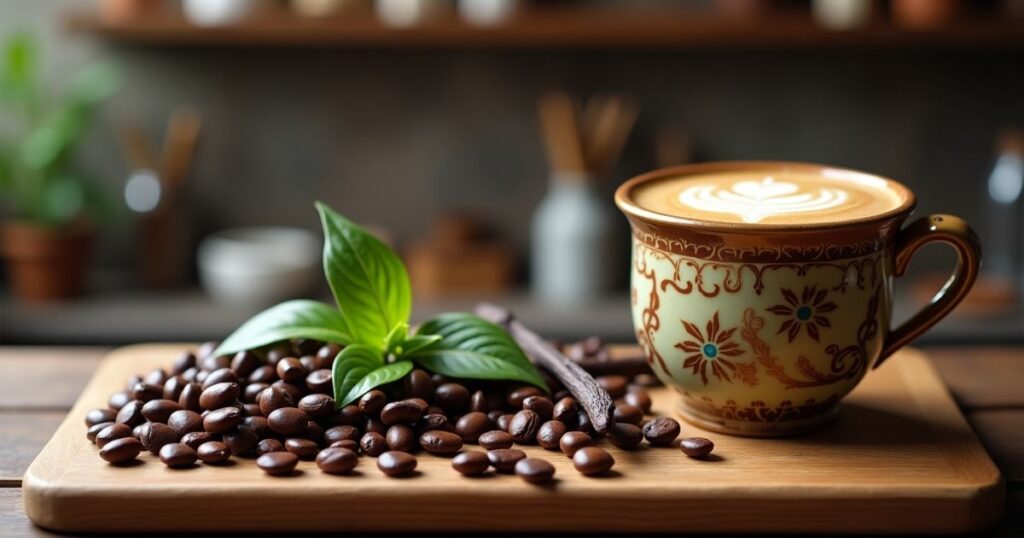
1. Packed with Antioxidants
Espresso is rich in antioxidants, which help fight free radicals in the body and protect against cellular damage. This makes it a powerful ally for overall health.
2. Good for Heart Health
Studies suggest that moderate coffee consumption is beneficial for heart health. Espresso, in particular, has less caffeine than regular drip coffee, so you can enjoy the health benefits without the risk of overdoing it.
3. Boosts Metabolism
Espresso is a natural metabolism booster. It provides a quick energy boost, helping you stay focused and productive throughout the day.
4. Improves Mood
Espresso stimulates the production of dopamine, the “feel-good” hormone, which can have a positive effect on your mood, leaving you feeling more upbeat and energized.
Enjoy your espresso for both its delightful taste and its many health benefits!
Conclusion: Mastering Espresso Coffee at Home
Espresso coffee is more than just a drink; it’s an experience. By following the right steps and using the best tools, you can brew the perfect espresso at home.
From understanding the basics of espresso to avoiding common mistakes, this guide has equipped you with the knowledge you need to create amazing shots every time.
So, get your espresso machine, fresh beans, and start brewing! The perfect shot of espresso awaits.
FAQs
What is an Espresso in Coffee?
Espresso is a concentrated coffee made by forcing hot water through finely-ground coffee beans. It has a rich, bold flavor with a thicker consistency. Often used as the base for other coffee drinks, it delivers a strong and full-bodied taste.
Does Espresso Coffee Have Milk?
Espresso coffee is made without milk. It’s a concentrated coffee brewed by forcing hot water through finely-ground coffee beans. If you prefer milk, you can add it separately, but traditionally, espresso is served without it.
What is an Espresso Coffee
Espresso is a strong black coffee made by forcing hot water through finely ground coffee beans. This process creates a concentrated coffee shot with rich flavor and a thick crema. It’s the base for many other coffee drinks.
Can I Make Espresso Without a Machine?
Yes, you can make espresso without a machine. Add 2 tablespoons of finely ground coffee to a tall mug or glass. Then, pour over hot water (about 1 ounce) and stir for a strong, concentrated brew.
Is Espresso Stronger Than Coffee?
Espresso is more concentrated than regular coffee, which means it packs more caffeine in a smaller serving. While a shot of espresso typically contains around 63 milligrams of caffeine, a standard cup of coffee usually has more overall caffeine due to its larger size. Therefore, espresso is stronger in terms of caffeine concentration.

